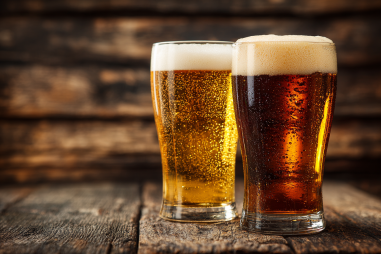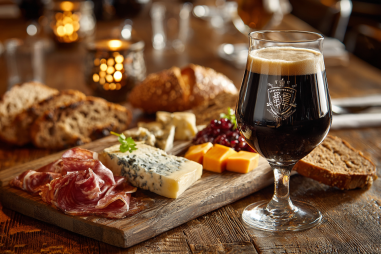New England IPAs (NEIPAs) have taken the craft beer world by storm, celebrated for their hazy appearance, juicy flavor profile, and aromatic complexity. However, understanding and appreciating the nuances of this beloved style goes beyond just enjoying a cold one. By learning how to read and interpret New England IPA tasting notes, you can enhance your palate, select brews that match your preferences, and engage deeper with the craft. Whether you’re a newbie or a seasoned IPA enthusiast, this guide will help you unlock the language of NEIPA tasting notes and become a pro at identifying flavors, aromas, and textures.
Introduction to Tasting Notes for New England IPAs
Tasting notes are essentially a beer’s story told through words—capturing everything from appearance to aroma, flavor, mouthfeel, and aftertaste. For New England IPAs, the notes often focus on juicy fruitiness, tropical aromas, and that distinctive hazy look. But why are tasting notes important? They help you communicate your impressions, guide your next purchase, and build a more refined palate. When reading NEIPA notes, it’s important to approach with an open mind, as breweries experiment with varying hops, yeast strains, and brewing techniques that affect each sip.
Key Flavor and Aroma Descriptors Explained
New England IPAs are known for their aromatic and flavorful complexity. The tasting notes often highlight these primary components:
- Fruity and Juicy: Expect descriptions like “mango,” “pineapple,” “citrus,” “passionfruit,” or “orange zest.” Hops such as Citra, Mosaic, and Galaxy bring these tropical and stone fruit notes to life.
- Hazy and Soft: The haze is a signature component, lending not only a visual cue but also a sensation of smoothness and softness in flavor.
- Floral and Herbal: Some NEIPAs might have subtle hints of flowers, herbs, or even slight pine due to the hop varieties used.
- Sweetness and Malt Balance: While hops dominate, many tasting notes will mention a slight sweetness or biscuit-like malt character that balances bitterness.
- Bitterness: Unlike traditional IPAs, NEIPAs typically have a low to moderate bitterness, often described as “soft,” “creamy,” or “rounded” rather than sharp or piney.
Understanding these common descriptors can help you anticipate and appreciate the nuances when you sip a NEIPA for the first time.
Assessing Appearance and Mouthfeel
Appearance matters—and not just for Instagram-worthy photos. When reading tasting notes, pay attention to terms describing the look and feel of the beer:
- Haze Level: Words like “opaque,” “cloudy,” or “milky” indicate the characteristic turbidity of a New England IPA, caused by high protein grains and hop oils.
- Color: Usually ranging from pale golden to deep orange, color can hint at malt selection and intensity.
- Head: Descriptions of “creamy head,” “dense foam,” or “long-lasting” relate to how the beer pours and its carbonation.
- Mouthfeel: Commonly noted as “soft,” “pillowy,” “smooth,” or “medium-bodied,” mouthfeel gives clues about carbonation levels, malt bill, and overall texture.
These aspects not only affect the sensory experience but also tell you much about the craftsmanship behind the brew and what to expect on your palate.
Identifying Hop Character and Balance
Hops are the heart and soul of any IPA, but especially for New England styles, hop character is a defining feature. When reading tasting notes, look for detailed information about hop varieties and the way their flavors come through:
- Tropical and Citrus Fruits: Hops like Citra and Mosaic are prized for their juicy, fresh citrus and tropical profiles.
- Resinous or Piney: While less common in NEIPAs than in West Coast IPAs, some beers may still offer a subtle pine or resin note.
- Herbal and Floral hues: These notes can add a delicate complexity and are often a sign of a well-blended hop bill.
- Balance: Good NEIPAs achieve harmony between hop flavor, malt sweetness, and subtle bitterness. Descriptions using terms like “balanced,” “rounded,” or “well-integrated” suggest a well-crafted beer.
Being able to pick out these hop characters will help you appreciate the skill in brewing and make more informed beer choices.
How to Compare Different NEIPAs
With the sheer variety of NEIPAs available—from small batch brews to widely distributed favorites—you might wonder how to tell them apart using tasting notes. Here are strategies to guide your comparisons:
- Focus on Dominant Flavors: Compare fruit notes (tropical vs. citrus), malt sweetness, and bitterness levels described in the notes.
- Assess Mouthfeel Differences: Does one beer feel creamier or denser than another? Mouthfeel can dramatically affect drinking experience.
- Look at Haze and Appearance: Some brewers push for a thicker haze, while others aim for a softer cloudiness, which influences perception.
- Evaluate Hop Profiles: Some NEIPAs emphasize juiciness; others include more herbal or pine notes which can affect personal preference.
- Check the Brewer’s Intent: Tasting notes often include the brewers’ descriptions or inspirations—knowing these can deepen appreciation.
By comparing these aspects, you can select a NEIPA that fits your taste preferences or challenge yourself to expand your palate.
Tips for Keeping a Tasting Journal
If you’re serious about improving your ability to read and understand tasting notes, keeping a personal tasting journal is invaluable. Here’s how to get started and maintain one:
- Record Basic Details: Note the beer name, brewery, date, and serving conditions.
- Describe Appearance: Use descriptive language about color, haze, and head retention.
- Note Aroma and Flavor: List the primary fruit, floral, or herbal notes you detect, and any malt or sweetness you notice.
- Assess Mouthfeel and Finish: Write down texture impressions and aftertaste characteristics.
- Compare and Rate: Give the beer a personal rating and compare it with similar NEIPAs you’ve tried.
- Use Consistent Terms: Over time, build your vocabulary to better articulate your sensory experience.
This practice sharpens your senses and makes reading commercial tasting notes much easier and more meaningful.
Engaging in Tasting Events and Competitions
Participating in guided tasting events, beer festivals, or even homebrew competitions can be a game-changer for your understanding of NEIPAs. These experiences provide opportunities to:
- Compare Multiple Samples: Side-by-side tastings highlight subtle differences and help refine your palate.
- Learn from Experts: Brewers, judges, and sommeliers often share insights on flavor profiles and brewing techniques.
- Practice Describing Beer: Engaging in discussions improves your vocabulary and confidence in describing what you taste.
- Discover New Brews: Many events showcase limited editions or experimental batches that deepen your appreciation for the style.
These interactions provide a dynamic context to better understand and enjoy New England IPAs beyond solitary sampling.
Elevating Your Tasting Skills
Mastering the art of reading New England IPA tasting notes enriches every beer-drinking experience. By understanding the language, identifying key flavors and aromas, and assessing mouthfeel and hop balance, you elevate yourself from casual drinker to an informed enthusiast. Keeping a tasting journal and engaging with the beer community through events will deepen your understanding even further. So next time you pop open a juicy, hazy NEIPA, you won’t just taste it—you’ll savor the story behind every sip like a true pro.







